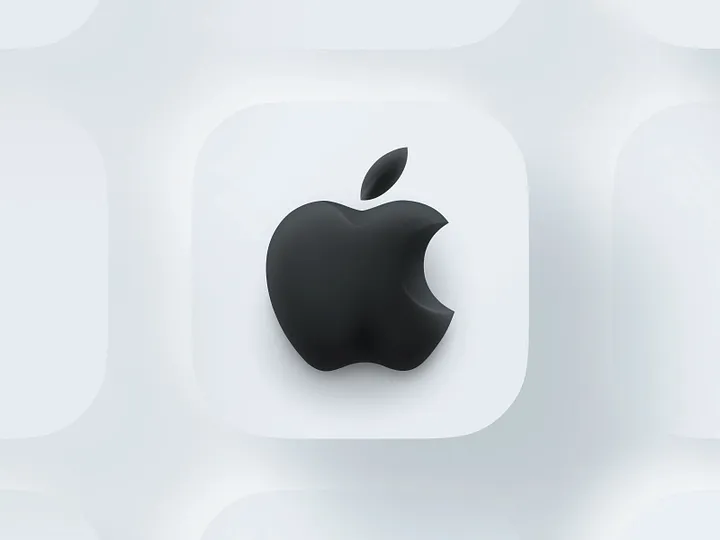Discover the top 10 lessons I learned as a Product Designer at Apple, from storytelling to mastering simplicity.
10 Life-Changing Lessons from Working as a Product Designer at Apple
In 2021, I achieved a dream many designers aspire to: working at Apple. Known as a hub of innovation, minimalistic design, and creative genius, Apple represents a place where bold, unconventional ideas thrive. During my time there as a Product Designer, I not only honed my craft but also internalized principles that I will carry with me forever.
This article explores the top 10 lessons I learned during my year at Apple, offering insights for aspiring designers, professionals, and anyone intrigued by the magic behind Apple’s success.
1. Great Communication Is More Important Than Great Design
Apple values exceptional design, but communication is what drives ideas forward. Whether it’s influencing team members, pitching concepts to stakeholders, or delivering VP presentations, the ability to express your ideas with clarity and passion is crucial.
- Key Takeaway: People may forget your words, but they’ll remember how you made them feel. Speak with enthusiasm and confidence to inspire trust and drive progress.
2. Storytelling Is Your Superpower
At Apple, storytelling is woven into every presentation. Designers are expected to craft narratives that connect with their audience, even for the smallest updates.
- Tips for Powerful Storytelling:Focus on one idea per slide.Use bold visuals and minimal text.Rehearse to ensure your presentation flows naturally.Engage your audience by making them feel optimistic and inspired.
- Focus on one idea per slide.
- Use bold visuals and minimal text.
- Rehearse to ensure your presentation flows naturally.
- Engage your audience by making them feel optimistic and inspired.
This storytelling culture helps align teams and brings abstract concepts to life, making it easier to secure buy-in for bold ideas.
3. Prioritize Big Ideas Over Small Fixes
At Apple, the focus is always on innovation rather than incremental usability fixes. This explains why Apple consistently unveils groundbreaking features but may delay addressing minor issues.
- Key Takeaway: Focus your energy on projects with long-term impact. Innovation takes time, but the payoff is worth it.
4. Trust Your Instincts: Become an Expert Decision-Maker
Secrecy is paramount at Apple, so user testing is often conducted internally or through expert reviews. These high-stakes critiques emphasize design intentionality and attention to detail.
- What I Learned: Trust your expertise and the insights of your peers. Be prepared to defend your choices with a clear rationale.
5. Craft Excellence Trumps Strategy
Designers at Apple are given the time and resources to perfect their craft. While I occasionally missed being involved in strategic decisions, focusing on interaction, system, and visual design allowed me to master the details.
- Key Takeaway: Specializing in your craft can lead to a higher standard of work and a more seamless user experience.
6. Go Beyond the Brief with “One More Thing”
The “One More Thing” culture, popularized by Steve Jobs, encourages designers to explore ideas beyond the immediate project scope. These bonus ideas may not be built, but they often inspire future innovations.
- Key Takeaway: Always push boundaries. Bonus ideas showcase creativity and offer food for thought.
7. Simplicity Is Hard, but It’s Worth It
Apple’s commitment to simplicity means rejecting anything that doesn’t contribute to an exceptional user experience. This principle requires discipline, but when executed well, the results are transformative.
- Key Takeaway: Strive for simplicity in design, even if it means making tough decisions or delaying launches.
8. Build Exceptional Products, Not MVPs
At Apple, releasing a product before it’s ready is not an option. A memorable example was when a PM delayed a product launch to ensure the experience was perfect across all platforms.
- Key Takeaway: Prioritize quality over speed. Customers expect excellence, and meeting that expectation strengthens your brand’s reputation.
9. Learn to Say No
One of the most valuable lessons I learned was how to prioritize effectively. With countless exciting projects, it’s tempting to say yes to everything, but focusing on high-impact tasks yields better results.
- Key Takeaway: Saying no allows you to dedicate your time and energy to projects that truly matter.
10. Top-Down Culture Is Not Always a Bad Thing
At Apple, the top-down decision-making process ensures faster approvals and alignment. Directors and managers often challenge ideas, but these debates are focused on delivering the best user experience.
- Key Takeaway: Embrace constructive criticism and trust in the expertise of your leaders. Their guidance can save time and elevate your work.
Conclusion: A Culture of Excellence
Working at Apple taught me that great design is only part of the equation. Communication, storytelling, and a relentless pursuit of quality are what truly set the company apart. These lessons have shaped not only my career but also my approach to creativity and collaboration.
If there’s one thing I hope you take away from this article, it’s this: Focus on creating something extraordinary, even if it takes time. Excellence is always worth the effort.
FAQ Section
Q1: Why does Apple focus on long-term goals over small fixes?Apple’s innovative culture prioritizes groundbreaking features that align with its reputation for excellence, even if it means delaying minor updates.
Q2: How does Apple encourage creativity in its designers?Through practices like storytelling, expert reviews, and the “One More Thing” culture, Apple creates an environment that fosters innovation and exploration.
Q3: Is a top-down culture effective for design teams?At Apple, the top-down approach accelerates decision-making and ensures a unified vision, allowing designers to focus on their craft.
Q4: What’s the biggest lesson for aspiring designers?Communication and storytelling are just as important as design skills. These abilities help secure buy-in and bring ideas to life.
Q5: How does Apple maintain its reputation for quality? By refusing to release products or features until they meet the company’s high standards, Apple ensures every experience is exceptional.
Apple, product design, lessons learned, design inspiration, career growth, innovation
